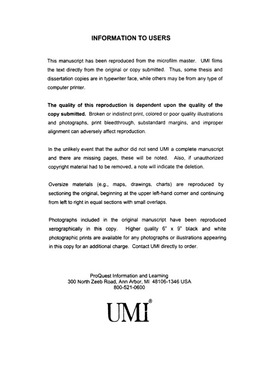| dc.contributor.advisor | Roegiers, Jean-Claude, | en_US |
| dc.contributor.author | Zeng, Zhengwen. | en_US |
| dc.date.accessioned | 2013-08-16T12:18:32Z | |
| dc.date.available | 2013-08-16T12:18:32Z | |
| dc.date.issued | 2002 | en_US |
| dc.identifier.uri | https://hdl.handle.net/11244/452 | |
| dc.description.abstract | Developing robust algorithms and software for locating the coordinates of hydraulic fracturing-induced microseismic events, and for simulating the first motion of the induced waveforms were central tasks for this research. In addition, initiation and propagation characteristics of asymmetrical hydraulic fractures were investigated; a recent discovered tight gas sandstone was systematically characterized; a method for measuring Mode-I fracture toughness was upgraded; and the packer influence on the initiation of asymmetrical fractures was numerically simulated. By completing this research, the following contributions have been made: (1) Development of a simplex-based microseismic LOCATION program. This program overcame the shortcoming of ill-conditioning-prone conditions encountered in conventional location programs. (2) Development of a variance-based computer program, ArrTime, to automatically search the first arrival times from the full waveform data points. (3) Development of the first motion simulator of the induced microseismic waveforms. Using this program, the first motion waveform amplitude in any direction at any location induced from seismic sources at an arbitrary location in a known fracturing mode can be calculated. (4) Complete characterization of a newly discovered tight gas formation, the Jackfork sandstone. (5) Upgrade of a core sample-based method for the measurement of fracture toughness. Mode-I fracture toughness of common core samples in any direction can be measured using this method. (6) Discern of the packer influence on HF initiation. It is numerically shown that a properly functioning packer would transfer tensile stress concentrations from the sealed ends to the borehole wall in the maximum principal stress direction. In contrast, a malfunctioning packer would induce tensile stress concentrations at the sealed ends that, in turn, induces transverse fractures. (7) Image of dynamics of the asymmetrical hydraulic fracture initiation and propagation. | en_US |
| dc.description.abstract | This dissertation starts with an investigation of the industry's needs for future research and development of hydraulic fracturing (HF) technology. Based on the investigation results of a questionnaire answered by some industrial experts, it was found that reliable hydraulic fracturing diagnostic techniques are in need. Further critical review showed that the microseismic method was one of the most promising techniques that needed further development. | en_US |
| dc.format.extent | xxii, 254 leaves : | en_US |
| dc.subject | Hydraulic fracturing. | en_US |
| dc.subject | Geology. | en_US |
| dc.subject | Gas fields Production methods. | en_US |
| dc.subject | Engineering, Petroleum. | en_US |
| dc.subject | Microseisms. | en_US |
| dc.subject | Geophysics. | en_US |
| dc.subject | Jackfork Formation (Ark. and Okla.) | en_US |
| dc.title | Laboratory imaging of hydraulic fractures using microseismicity. | en_US |
| dc.type | Thesis | en_US |
| dc.thesis.degree | Ph.D. | en_US |
| dc.thesis.degreeDiscipline | Mewbourne School of Petroleum and Geological Engineering | en_US |
| dc.note | Adviser: Jean-Claude Roegiers. | en_US |
| dc.note | Source: Dissertation Abstracts International, Volume: 63-03, Section: B, page: 1543. | en_US |
| ou.identifier | (UMI)AAI3045830 | en_US |
| ou.group | Mewbourne College of Earth and Energy::Mewbourne School of Petroleum and Geological Engineering | |
